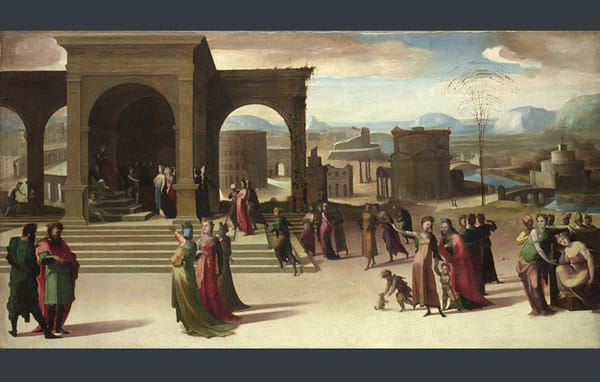Voyeur at the Courtauld: Schiele’s Radical Nude Impresses
Mindlessly erotic - Elizaveta looks at Egon Schiele's works

A mention of sex in any context, really, is usually enough to get people excited (pun intended). After all, to quote Oscar Wilde: “Everything in the world is about sex, except sex. Sex is about power”.
It is clear to spectators of The Radical Nude – the first solo exhibit of Egon Schiele’s nudes in the UK – that in all of the paintings, whether dark tones or vivid bright colors, there is an unexpected sense of the power of the imperfect naked human form. And so, in that sense, Schiele revolutionized the traditionally fragile and limp take on the nude.
With his “radical nudes”, Schiele is equally successful and scandalous in breaking both the artistic conventions and social taboos of his time. Paradoxically, there is a kind of unnaturally natural and softly aesthetic beauty in the way the sharp angles, inorganic colors, and awkward poses complement each other and form the total work of art.
While Schiele employs unconventionally bold colors to animate and charge some of his nudes with sexual energy, he uses solely dark, deathly tones in others. These nudes are even further from traditional, conveying not only a far from idealised image of the human form, but one moreover dark and diseased. Schiele’s friends called this style “the death beneath the skin”, and it is one the artist used often to further complicate the eroticism of the nude with a Freudian conflict of desire and death.
These nudes are clearly alive, but at the same time are also dying. This dichotomy, which runs through all of Schiele’s work, is what gives it its wonderful, heady tension, and syphilitic energy.
Though bordering on pornography and enough to certainly raise a few early 20th century brows, Schiele’s nudes are never mindlessly erotic, but rather sophisticatedly sexy. The works at The Radical Nude are often psychologically symbolic and philosophically suggestive.
For example, in Two Girls Embracing (1915), Schiele paints one woman conventionally while the other appears more as a doll with dull point eyes. This detail gives the painting a further symbolically dynamic depth beyond the - at that time scandalous – lesbian implications.
Moreover, in many of the exhibited paintings, the figures demonstrate Schiele’s characteristically alien and unnatural gestures, which despite being expressive, seem to hold some mysterious coded meaning.
This analysis could be applied to all of Schiele’s work, which is perhaps why their legacy has lasted for nearly a century. In the history of the nude – an artistic canon that stretches from the Venus of Willindorf, through Da Vinci, and all the way to contemporary artists like Tracy Emin – Schiele’s work stands out as bold, unique, and visceral.
It is perhaps the elusive nature of Schiele’s nudes more so than their sexual subject that captivates the audience. For a moment one manages to grasp the intention behind the pose and colors and lines but the moment passes, and the meaning evades the observer. The nudes cannot be fully understood (much like Schiele himself) and that is perhaps why they continue to fascinate generation after generation.
_Egon Schiele: The Radical Nude, is on at The Courtald Gallery, located in Somerset House. It runs from 23rd October until 18th January. _
Tickets are £8.50 for adults, £7.50 for students. Free for members.









